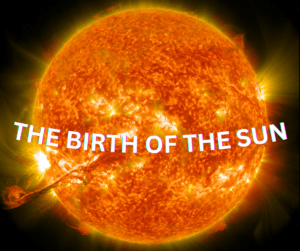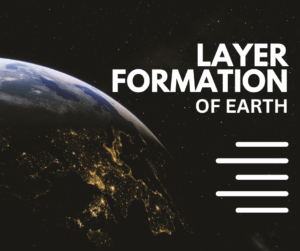Introduction
The birth of the Earth is an amazing narrative, spanning billions of years, tracing the evolution of our solar system from its formation to the life-supporting planet it is today. This article analyzes the processes and events that contributed to the formation of the Earth and sheds light on the initial conditions that shaped our world.
The Formation of the Solar System
The Nebular Hypothesis
About 4.6 billion years ago, a giant molecular cloud, called the solar nebula, began to compress under its gravity. This contraction was probably prompted by the shock produced by a nearby supernova explosion. As the nebula compressed, it began to spin, forming a flat, rotating disk with a hot, dense center.
The Birth of the Sun

At the center of this disk, where most of the mass was concentrated, the fusion process eventually began and the Sun was born. The Sun’s enormous gravity began to attract surrounding gas and dust, triggering the process of accretion. In the protoplanetary disk around the young Sun, dust and ice particles collided and clumped together, gradually forming larger bodies.
Formation of the Proto-Earth
Asteroidea and Proto-Planets
In the protoplanetary disk, small bodies known as asteroids began to form. These asteroids collided and clumped together to form larger bodies, called proto-planets. Over time, one of these proto-planets grew so large through continued collisions and accretion that it eventually became the proto-Earth.
Theia Impact Hypothesis
An important event in Earth’s early history was a massive collision with a Mars-sized body called Theia. This collision occurred about 4.5 billion years ago, throwing vast quantities of debris into space. This debris later coalesced to form the Moon, while the energy produced by the collisions contributed to the segmentation and evolution of Earth’s layers.
Differentiation and Layer Formation

Core, Mantle, and Crust
As the proto-Earth grew and accumulated more mass, its internal temperature increased enormously, due to the energy produced by radioactive decay and collisions. This heat partially melted the Earth’s interior, beginning the process of segmentation. Heavier elements, such as iron and nickel, sank toward the center and formed the core, while lighter silicate minerals rose to the top and formed the mantle and crust.
Formation of the Atmosphere and Oceans
Igneous activity expelled gases locked in Earth’s interior, forming the early atmosphere. This early atmosphere was composed primarily of water vapor, carbon dioxide, and nitrogen, with almost no oxygen. As the planet cooled, the water vapor solidified and the first oceans formed. These early oceans played a key role in regulating Earth’s temperature and providing favorable conditions for the beginning of life. The Hadean Era
Harsh Early Conditions
The first 500 million years of Earth’s history, called the Hadean Era, were filled with extremely harsh conditions. The planet’s surface was constantly bombarded by meteorites and volcanic activity was extremely intense. Despite these harsh conditions, the oceans laid the groundwork for the formation of life, which provided the basis for the evolution of more complex organisms.
Conclusion
The birth of the Earth was a complex and tumultuous process, involving many astronomical events and gradual changes over billions of years. From the contraction of the molecular cloud to the formation of the solar system, and from the concentration of bodies to the separation of Earth’s layers, each stage played an important role in shaping the planet we know today. Understanding Earth’s origin not only provides insight into our planet’s history but also gives important clues about the formation of other planetary systems in the universe.
